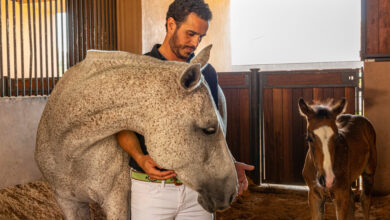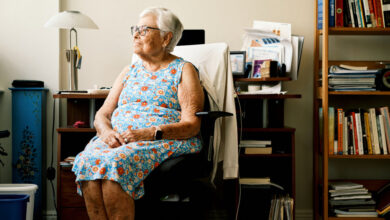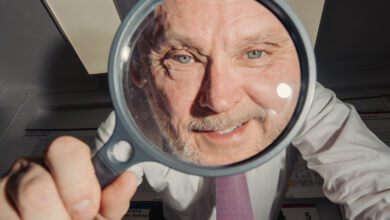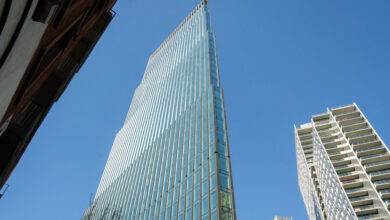A Building With Possibilities, on East 77th Street, Is Listed for $20 Million
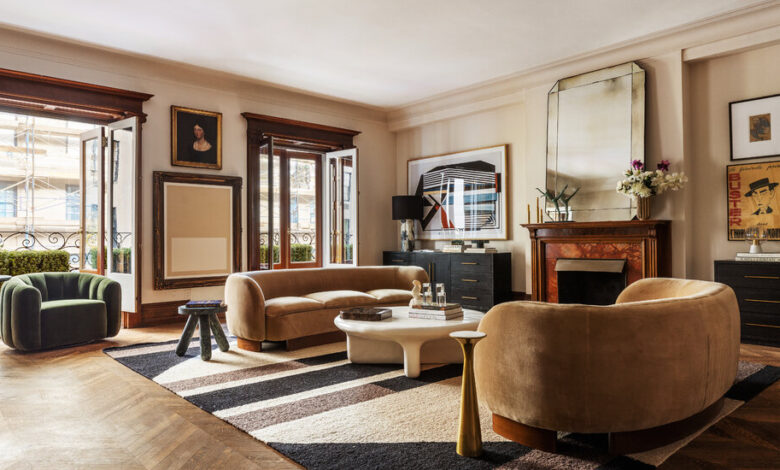
[ad_1]
Maurice Kanbar never saw the sense in accepting things as they were. The lifelong inventor and entrepreneur, who died in 2022 at age 93, developed, among other things, a comb for “defuzzing” sweaters, New York’s first multiplex cinema, and Skyy vodka, which he — somewhat dubiously — claimed wouldn’t leave you with a hangover.
Tall tales of miracle booze aside, Mr. Kanbar was also a real estate investor, and built up an enviable portfolio of properties that included a Neo-Renaissance mansion at 4 East 77th Street, which is being put up for sale. The 11,395-square-foot property features a ground-floor duplex that currently houses the Michael Werner Gallery. Both of those floors were fully renovated in 1990 by Mr. Werner with the architect Annabelle Selldorf.
There are four apartments above the art gallery: Two are floor-throughs, each with two bedrooms and two-and-a-half baths, on the third and fifth floors. There are two one-bedroom units on the fourth floor. Mr. Kanbar lived in the apartment on the fifth floor and had a 15-by-19-foot terrace.
“When we would visit, it was so much fun for our kids,” said Stacey Kanbar of Compass, Mr. Kanbar’s niece by marriage and the co-listing agent with Leonard Steinberg. “He was like a mad scientist. Every surface was covered with such interesting artifacts. It was such a treat for any creative person’s eyes.”
The entire property is being relisted at $20 million after being taken off the market at the end of last year. The apartments — which have not been renovated since Mr. Kanbar bought the building in 1964 — are being delivered vacant, while the gallery has a market-rate lease that the buyer has the option to terminate nine months after closing on the building. The monthly property taxes are estimated at around $16,000.
“If you look at what a fully renovated mansion costs today, this house is actually an incredible value,” Mr. Steinberg said, adding that comparable renovated properties can cost upward of $50 million.
The building, with a facade of Tuckahoe marble sourced from a quarry in Westchester, is built to nearly its full 25-foot lot width, thanks to being grandfathered into zoning regulations. Because of that, and because it’s set back from the adjacent property, there are windows on both the east and west sides of the building.
“Not only does it have the bones and the location, but it also has provenance,” Mr. Steinberg said. “And you can’t buy provenance and you cannot build it. You either have it or you don’t.”
The residence was built by Robert McCafferty and Richard W. Buckley in 1897 as a single-family home. It was converted into a mixed-use property in 1942, and included a doctor’s office on the ground floor and several apartments above. The art dealer Leo Castelli opened a gallery in his living room on the fourth floor in 1957, and introduced seminal artists like Andy Warhol, Roy Lichtenstein and Cy Twombly to the Upper East Side.
Mr. Kanbar bought the five-floor property with a full-height cellar in 1964. The building has remained a center of gravity in the art world — the Castelli Gallery moved a few doors down to 18 East 77th Street, while Gagosian and several other high-profile galleries are around the corner — and is being marketed to buyers as either an income-generating property or a magisterial single-family conversion.
The centerpiece of the building is an original spiral staircase that curls all the way up to the roof, which lets light flood in from both the windows and the skylight. There is also an elevator that serves every floor except the 1,600-square-foot roof. Mr. Kanbar left many of the original, prewar details intact, including the crown moldings and hardwood floors. And the building has two front-facing windows — instead of the more common three — which allowed rooms of equal size to be built on the fourth and fifth floors. The third-floor windows open onto Juliet balconies.
“Much of it is what it was when he bought it, so it has some collector’s item quality about it,” Mr. Steinberg said.
Whichever collector’s hands it ends up in, the property will come with the added value of being for a good cause. Mr. Kanbar, a lifelong philanthropist, bequeathed the proceeds of the sale, minus the transfer taxes and agent commissions, to organizations including the Kanbar Cardiac Care Center at California Pacific Medical Center in San Francisco and the Kanbar Institute of Film & Television at New York University.
“It gave him so much joy to be able to give his money to people and help others,” Ms. Kanbar said. “I remember him quoting Andrew Carnegie, who said, ‘I resolved to stop accumulating and begin the infinitely more serious and difficult task of wise distribution.’ That encapsulated how Maurice felt.”
[ad_2]
Source link


